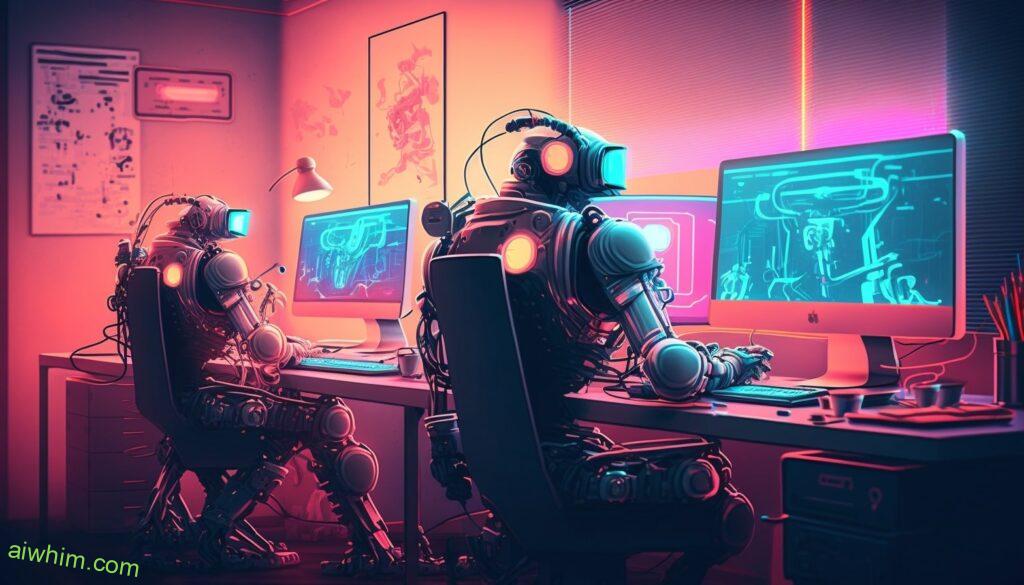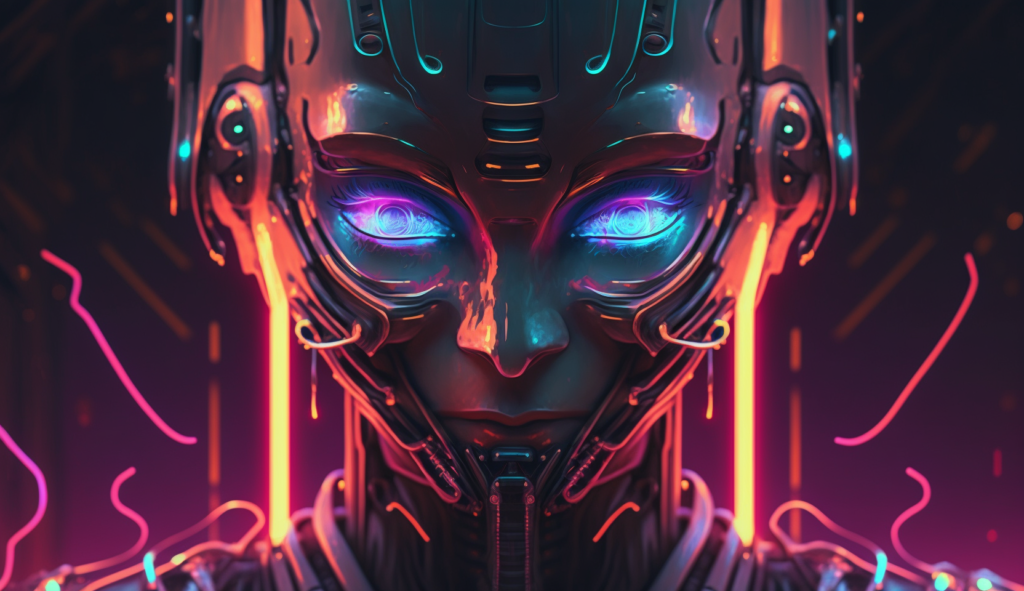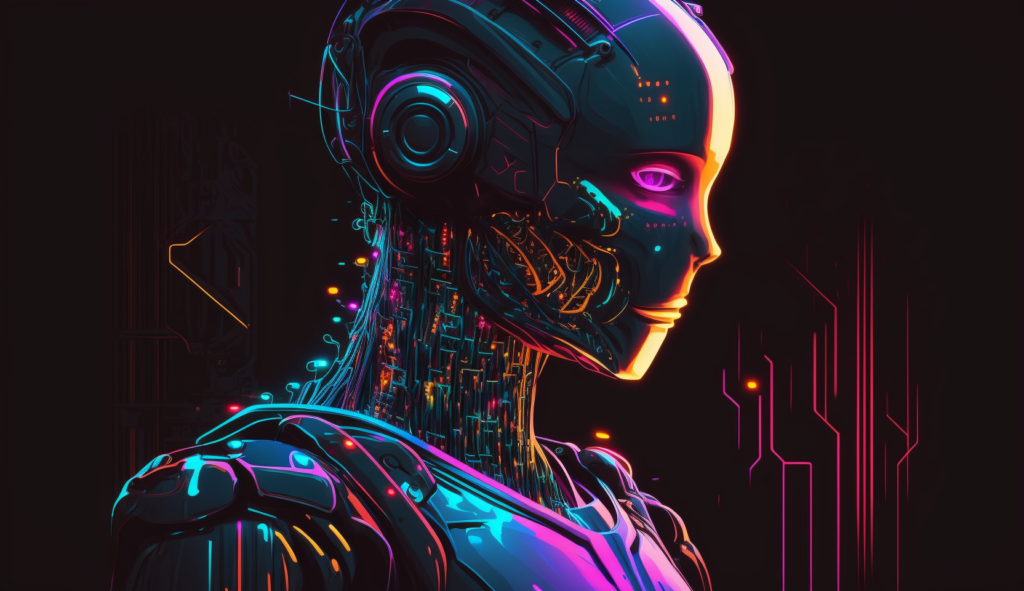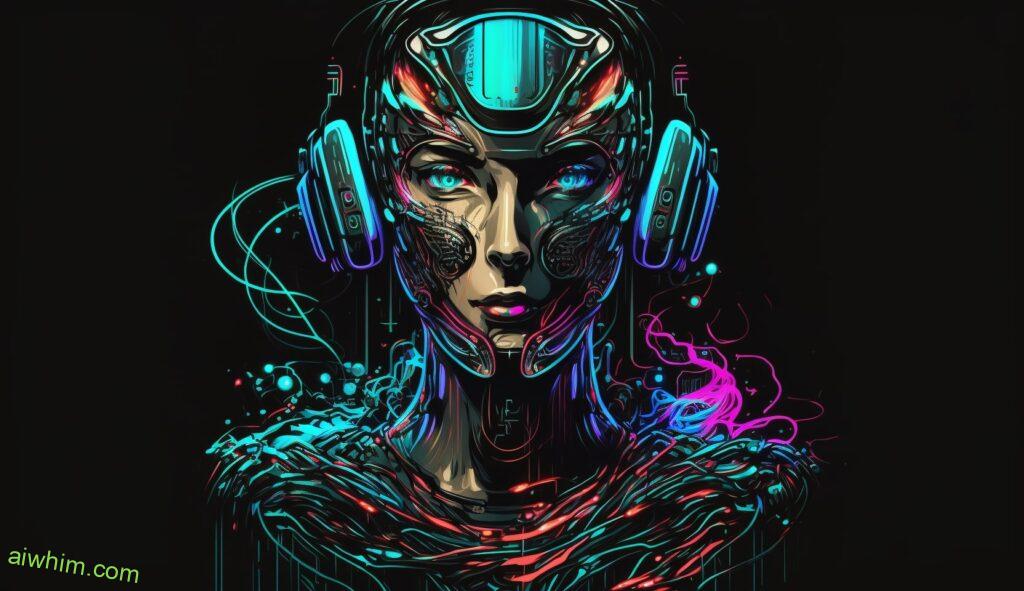Do you ever worry that chatbots and AI will eventually take over your job as a call center agent? It’s understandable to feel anxious about the possibility of technology replacing humans in the workplace. But is there really a risk of this happening? In this article, we’ll explore whether or not it’s possible for chatbots and AI to steal your job as call a center agent.0
We’ll also discuss ways that both employers and employees can prepare for the potential changes that AI and chatbots could bring about in the call center industry. By understanding what challenges lie ahead, everyone involved can make informed decisions about their careers and understand how best to protect them going forward.

Definition Of Automation
Automation is the process of using technology to run a business or organization more efficiently. This includes tasks such as managing customer service, accounting, and other data-driven processes. It also includes the use of robots and artificial intelligence (AI) algorithms to automate mundane tasks that would otherwise require manual input from humans. Automation can help reduce costs, increase efficiency, and provide faster services with fewer errors than traditional methods.
However, automation has its drawbacks too. Many fear that automation will lead to job losses due to human labor being replaced by machines or AI programs. There are certainly concerns over how AI and chatbot technology could take away jobs traditionally done by people in call centers. In light of this worry, it’s important to consider both sides before making any decisions about implementing automated technology into your workplace.

Benefits Of Automation In Call Centers
Automation in call centers has numerous advantages. For one, it can make the job of a call center agent much more efficient and effective. Automated systems can reduce wait times significantly by quickly providing customers with answers to their questions or problems. This allows agents to focus on more complex tasks without being bogged down by simple requests. Furthermore, automated tools can provide better customer service experiences as they respond faster and are able to access additional resources that human agents may not have access to.
In addition, automation also helps protect against burnout among agents because there is less pressure for them to take on every request that comes through the line. With automated systems doing some of the work, agents will be able to take breaks when needed and get back into the workflow refreshed. The use of AI-powered chatbots can even help improve employee morale in call centers since no longer do all calls need to be answered manually; instead, agents can focus on more engaging conversations with customers while bots handle mundane tasks like scheduling appointments or gathering information from clients. All these factors lead to improved productivity and happier employees who feel empowered rather than overwhelmed by their jobs – something everyone wants!
Disadvantages Of Automation In Call Centers
With advancements in automation, call centers have begun to utilize chatbot and AI technology as an alternative to manual labor. However, with this shift there’s also the looming fear of losing one’s job due to automation. While there is a lot of potential for these technologies, it’s important to consider the risks they may bring.
One risk associated with automating call center operations is that robots can’t necessarily provide customer service without human intervention. Humans are often required to provide accurate responses and resolutions to customers’ inquiries – something machines can be programmed to do but not always effectively. Additionally, bots are limited in their ability to understand context or emotions; meaning a real person must still oversee them at all times. This could potentially lead to jobs being eliminated from the industry if employers decide that having fewer people doing more work is more profitable than maintaining higher staff numbers.
The other major disadvantage is related directly to cost savings: while automated systems might save money in the long run, they require significant investments up front which many businesses may not be able or willing to make. Furthermore, even once installed and running, these systems need constant maintenance and monitoring by humans which adds additional costs as well as time consuming tasks for those involved. As a result of this expense, some organizations may opt out of using such technologies altogether – leaving employees safe from replacement threats but unable to take advantage of any productivity benefits offered by advances in automation technology.

Impact On Employment Opportunities
A recent survey from Deloitte found that 1 in 5 Americans are worried about losing their job to automation. This statistic paints a stark picture of the potential disruption caused by chatbots and AI on employment opportunities.
The introduction of technology into customer service roles will have an effect on those seeking work in this field. Chatbots and AI can handle routine inquiries more quickly than human agents, making them increasingly attractive for companies looking to cut costs. As such, there is some concern among call center agents that they may be replaced by automated systems in the future.
However, while this shift could represent a challenge for some workers, it’s important to note that many industries are adapting to new technologies and incorporating them into existing jobs. Companies hiring call center agents now need people who possess not only technical skills but also soft skills like problem-solving and empathy. Moreover, much of the customer experience still involves interpersonal interaction with humans; customers often prefer speaking directly with another person when dealing with complex or sensitive issues. Ultimately, the impact of chatbots and AI on employment opportunities depends on how organizations decide to use these tools within their customer service departments.

Use Of AI In The Call Center Industry
The potential of Artificial Intelligence (AI) to revolutionize the call center industry is undeniable. AI can enable or eliminate certain customer service tasks, from identifying customers’ needs quickly and accurately to automating mundane jobs. As AI advances, it could eventually replace most human workers in the call centers – a prospect that raises concerns about job security for many of us.
Despite these worries, there are still ways for humans to remain valuable players in this space by leveraging their unique strengths and skillsets. For example, while bots may be able to handle simple customer inquiries more efficiently than people, they are not as adept at providing personalized or emotional support—an area where humans excel. This means that even if call center agents do share their roles with robots someday, there will always be room on the team for people who bring an element of warmth and empathy to their work.

Challenges Of AI Integration
AI has been hailed as a revolutionary technology, but it brings with it its own set of challenges. For call center agents, the risk of being replaced by chatbots and AI is very real. This fear can be especially daunting for those who are not technologically savvy or have limited experience with digital tools.
The introduction of automated solutions could see some roles become obsolete and lead to job losses in certain industries. There’s also the potential for human errors when interacting with AI-based systems that may exceed what would occur if a person was using the system instead. Additionally, many people worry about how safe their data will be when handled by machines rather than humans.
These concerns make it important for businesses to consider both the potential benefits and risks associated with integrating AI into their operations before taking any action. Companies must ensure they have sufficient measures in place to protect customer data while still streamlining processes so that employees maintain an efficient workflow without sacrificing quality control or safety standards. It’s essential to create safeguards against machine failure and account for ethical considerations—such as ensuring all users receive fair treatment regardless of race, gender, age, etc.—in order to prevent situations where people feel like they cannot trust AI solutions over traditional methods.

Chatbot Architecture
Chatbots and AI technology have been around for years, yet the potential to revolutionize the customer service industry is only just beginning. The architecture of a chatbot consists of three primary components: natural language processing (NLP), data analytics, and machine learning (ML). NLP allows the chatbot to interpret human language and respond in kind; it uses algorithms to break down sentences into their component parts so that it can understand what someone means when they type something into an interface. Data analytics enables the bot to process vast amounts of information quickly and accurately; this includes extracting insights from conversations or analyzing large datasets. Lastly, ML ensures that the chatbot can continually improve its performance by learning from previous experiences.
The possibilities are truly exciting – with such sophisticated technology at the fingertips, call center agents could soon see themselves freed up from mundane tasks like routing calls or responding to FAQs. Instead, their time will be spent on more meaningful work such as managing complex customer issues or engaging customers in deeper ways. This shift could not only open up new opportunities but also create a more satisfying experience for both agent and customer alike.

Role Of Chatbots In Service Delivery
The role of chatbots in service delivery is increasing rapidly. As companies seek to reduce costs and improve customer experience, they are turning to automated solutions like chatbots and AI-driven technologies. Chatbots are computer programs that use natural language processing (NLP) to interact with customers as if they were human agents. They can be used for a variety of tasks such as answering frequently asked questions (FAQs), providing product information, or directing customers to the right department for assistance.
Chatbot technology has several advantages over traditional call centers:
- It reduces overhead costs by streamlining operations and minimizing reliance on expensive staff members.
- Customers get instant responses from their queries without having to wait in line or dial multiple numbers.
- It allows businesses to provide 24/7 support, which is especially important for global companies whose customers may be located in different time zones.
- Chatbots also offer personalized experiences using AI-driven analytics that can understand customer needs better than humans.
Chatbots have become an integral part of many businesses’ strategy, allowing them to deliver improved services while cutting down on labor costs. However, it’s important not to see them as competition; instead, they should be seen as tools that will help enhance customer service and increase efficiency so both employees and customers alike benefit from their presence. Furthermore, when done right, bots don’t replace people but rather empower them with better opportunities through automation and augmentation of their daily tasks—allowing more time for meaningful activities outside the scope of boring routines

Advantages And Disadvantages Of Chatbots
Moving on from the role of chatbots in service delivery, let’s take a closer look at the advantages and disadvantages associated with this technology. Chatbots have become increasingly popular due to their ability to quickly respond to customer inquiries without the need for human interaction. This can save businesses time and money, as they don’t need to hire additional staff or train existing employees on how to use the system. Additionally, customers tend to prefer interacting with automated services since it eliminates long wait times and provides more accurate answers than traditional customer service agents.
On the other hand, there are several drawbacks that come along with using chatbots. For instance, these programs cannot always understand complex requests or accurately interpret human emotions, which may lead to confusion or frustration among customers. Furthermore, some customers may feel uncomfortable talking directly to an AI-powered chatbot instead of a person working behind the scenes. Finally, although chatbots offer cost savings and efficiency gains for businesses, they do not replace jobs entirely but rather free up resources so that humans can focus on higher-value tasks such as problem solving or strategy development.

Role Of Human Agents
The rise of chatbots and AI has caused concern among many people in the workforce, particularly call center agents. While it’s true that chatbots and AI can provide efficient customer service by automating processes, they cannot replace human empathy or intuition.
Humans are still essential to providing an effective customer experience:
- They understand context better than machines;
- They possess higher levels of emotional intelligence and can interpret subtle cues from customers;
- They have deeper knowledge about products and services, which allows them to answer complex questions more accurately;
- And, when working with difficult customers, their ability to remain calm and professional is invaluable.
Call center agents often play a vital role in helping customers solve problems quickly and efficiently – something which AI technology simply cannot replicate. Furthermore, humans bring a level of connection between brand and customer that no artificial intelligence could ever match. The need for human interaction will always be there as long as people desire freedom over automation—and this bodes well for the future of call center jobs.

Combination Of AI And Human Agents
As the saying goes, two heads are better than one. This rings true when it comes to call center agents and AI working together. While some may fear that implementing automated systems within customer service will replace human labor, there is also evidence suggesting that a combination of both could be beneficial for businesses in terms of efficiency and cost reduction.
AI has become increasingly sophisticated over time, with its ability to process data faster than humans and provide quick answers to questions; however, they can’t always come up with creative solutions or handle complex queries like an experienced agent might. Consequently, this adds value to the role of a human agent as they have the emotional intelligence necessary to interact effectively with customers while still being able to use AI tools such as chatbots or virtual assistants as support when needed. By blending these technologies together, organizations can offer personalized experiences tailored to each individual customer without sacrificing quality which would ultimately benefit them in the long term.
Not only does combining AI with human staff create advantages for companies but also their employees who engage more readily with customers compared to relying solely on technology. As well as giving agents more capabilities in order to serve customers better, it helps reduce stress levels too by taking care of mundane tasks so they can focus on critical issues instead – allowing them more freedom while doing their job.

Training For Human Agents
Though there is a risk of chatbots and AI replacing call center agents, humans can still keep their jobs with the right training. Human agents have an advantage over machines in many areas, such as listening to customers’ needs and helping them solve problems quickly. As long as they stay up-to-date on new technologies and industry trends, human agents can provide valuable services that no machine could ever replicate.
Training for human agents should involve both technical skills and soft skills. Technical knowledge gives them the tools to troubleshoot customer issues efficiently, while soft skills help them build better relationships with customers by understanding their feelings and motivations. Additionally, emotional intelligence courses can equip them with the ability to manage stress and maintain their composure during difficult conversations. Ultimately, this kind of well-rounded training will enable agents to develop meaningful connections with customers that cannot be replaced by technology or automated processes.
With proper preparation for today’s dynamic work environments, human agents are equipped to remain relevant and successful within the call center industry. By continuously learning how to stay abreast of evolving technologies while honing interpersonal communication skills, they can continue providing quality service at any level of complexity demanded by customers.

Ethical Considerations For Automation
As technology advances, so should our ethical considerations for automation. Automation can be a great asset in the workplace, but it also presents potential risks to workers. In particular, chatbots and AI pose an interesting risk – could they eventually replace human agents in call centers?
The answer is yes – if we allow them to do so without taking into account basic values of fairness and justice. If we move forward with implementing such technologies, we must ensure that their use is not only cost-effective but also ethically sound. We need to consider how these systems are affecting job security and worker safety, as well as any potential privacy violations associated with their use.
We must continue to evaluate the impact of automation on the workforce and take steps towards ensuring fair treatment of all workers regardless of whether or not they have been replaced by bots or AI systems. As technology continues to evolve, it’s important that we remain mindful of the ethical implications involved and develop guidelines which protect both employees and businesses from unforeseen consequences. It is essential that any decisions made about automation err on the side of caution – after all, people deserve dignity in work just as much as machines do!

Future Outlook
The future of call center agents is uncertain, as AI and chatbots become more prevalent in the industry. There are predictions that AI could eventually replace many call centers jobs, while other analysts believe that they will supplement workers by taking on mundane tasks. Ultimately, it’s difficult to predict what role, if any, these technologies will play in a few years’ time.
That said, there may be some areas of call center work which cannot be automated or replaced with technology – such as empathy and customer service care. These specialised skills require human judgement and understanding – something machines still lack. So while automation advances rapidly, humans will remain essential for those aspects of customer service that rely on emotional intelligence. For now at least, job security within this sector looks promising for those who possess these valuable traits.

Regulatory Requirements
As automation and AI become more prevalent in the workplace, it’s important to address their regulatory requirements. According to a recent survey, almost 70% of organizations have adopted chatbots or AI technology for customer service purposes – an incredible jump from just 10 years ago. It is clear that this technology is here to stay and its growth must be managed effectively with comprehensive regulations.
Here are four ways businesses should ensure they comply with these regulations:
- Take time to understand industry specific laws
- Prioritize training employees on relevant compliance topics
- Utilize ethical algorithms when analyzing data sets
- Invest in third party audits and certifications as needed
Businesses should also consider how implementing AI could impact employee morale and job security. Regulations can help mitigate such concerns by setting standards for the use of AI tools within the organization and providing workers with protections against potential job displacement due to automation. This will enable companies to reap the full benefits of technological advancements while maintaining fair practices in the workplace. By taking proactive steps now, organizations can ensure their operations remain compliant with any applicable rules governing AI usage while keeping their staff secure and engaged long into the future.

Summing It Up
In conclusion, automation in the call center industry can provide numerous benefits to both customers and businesses. However, it is important to consider potential disadvantages such as job losses for human agents. With AI and chatbots taking on more complex tasks, training will be essential for those who remain employed in the industry. It’s also crucial that ethical considerations are taken into account when using automated systems.
Regulatory requirements must also be met when implementing new technologies so that customer data remains safe and secure. Looking ahead, automation has the potential to revolutionize the way people access services while allowing companies to deliver a better customer experience with fewer resources. Despite this, I believe there is still space for humans within the sector – especially if they have been given appropriate training and support throughout their careers.
Ultimately, automation doesn’t need to spell disaster for employment opportunities; rather, it should be used as an opportunity for growth and development of staff members working in the call center industry. The key is finding a balance between technology-driven solutions and personalized experiences from human agents – something which every business needs to strive towards going forward!
Author: Ole Paulson
Author Bio: I’m Ole and on this website, I share everything there is to know about Artificial Intelligence, and useful tips for using AI to our advantage. I have a background in data science and research and have been following the AI-space for years. You can read more about me in the “About” page.







